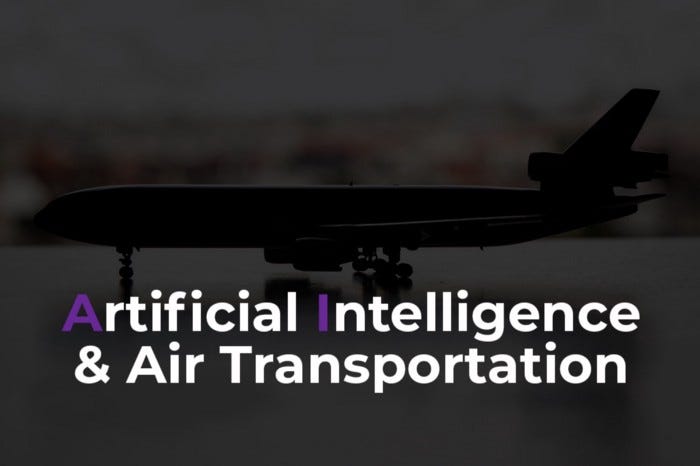Beyond Drones: Artificial Intelligence and Air Transportation

Autonomous aircrafts exist today, and we’re not simply referring to drones. Over recent years, automated artificial intelligence (AI) flight systems have taken on more and more tasks from pilots. Today, these systems have taken on the role of an additional (not replacement) co-pilot. The benefit goals? Flight crews will have less stress and a reduced risk of pilot error.
In an industry that is projected to have a shortage of pilots, AI solutions may be the solution that will prevent your next flight cancellation. And why not? Machine vision is currently used in cars, and there should be no reason why these applications can’t be scaled with precision and caution for aircrafts.
AI has the potential for great logistics tools, including fleet management. Airlines can expect two significant results from implementing AI logistic capabilities:
1. Airlines will have significant savings on aircraft repairs and maintenance. Data can be used for predictive maintenance that improves aircraft reliability at a lower cost.
2. There will be fewer delays and cancellations due to aircraft problems, because AI systems have proactively addressed maintenance issues. Flight cancellation problems hit the customer hard. They need accommodations and a new flight, and they may very well pick a different airline for their next trip.
In the News: Boeing 737 MAX Aircrafts Grounded
How does the Boeing 737 grounding relate to AI? Many airlines and countries around the world — including the US — have grounded Boeing 737 Jets after the recent Ethiopian crash where all 157 people on board were killed. This followed the Indonesian crash of a Boeing 737 last October that killed 189 people. Both tragedies occurred shortly after takeoff. Among other things, early investigations and conversations are focused on the increased sophistication of cockpit technology.
And while it’s important to stress that these investigations are in their early stages and ongoing, experts are quite certain that these two aircraft malfunctions are not a coincidence. The pilots in each case called in technical problems, and both aircrafts were authorized to turn back. Tragically, neither were able to do so.
Experts are investigating the 737’s design. There are sensors known as the “maneuvering characteristics augmentation system” (MCAS) that provides information intended to adjust and stabilize the plane based on flight conditions, and it’s possible that this system had something to do with both accidents.
Concerned Aircraft Pilots
The pilot of the Indonesian flight had flown more than 8,000 hours. Newer pilots are trained with a focus on automated systems, including those that use AI functionality. This can be interpreted poorly from each perspective: experienced pilots are less proficient with cutting-edge technology, and newer pilots have a less substantial understanding of how to manually handle an aircraft if technology fails. Both scenarios must be addressed with the same urgency.
There’s Better News on the Ground and in Airline Back Offices
Air traffic controllers will soon be testing a new AI product in development by Airbus. This audio translator and clarifier will improve communications between languages and in noisy, stressful situations. There are also AI technologies that will be put to use in airlines’ back offices. These systems will have operational benefits that save time and money as well as improve efficiencies. These and other AI products will be aimed at improving the customer experience for air travelers.
As discussed in some of our other articles on technology in other industries, we have yet to establish the vast potential benefits of AI technology. Until we do, we encourage industry leaders to develop new technologies that improve products and services, and we hope their research and development is done with integrity and safety in mind.